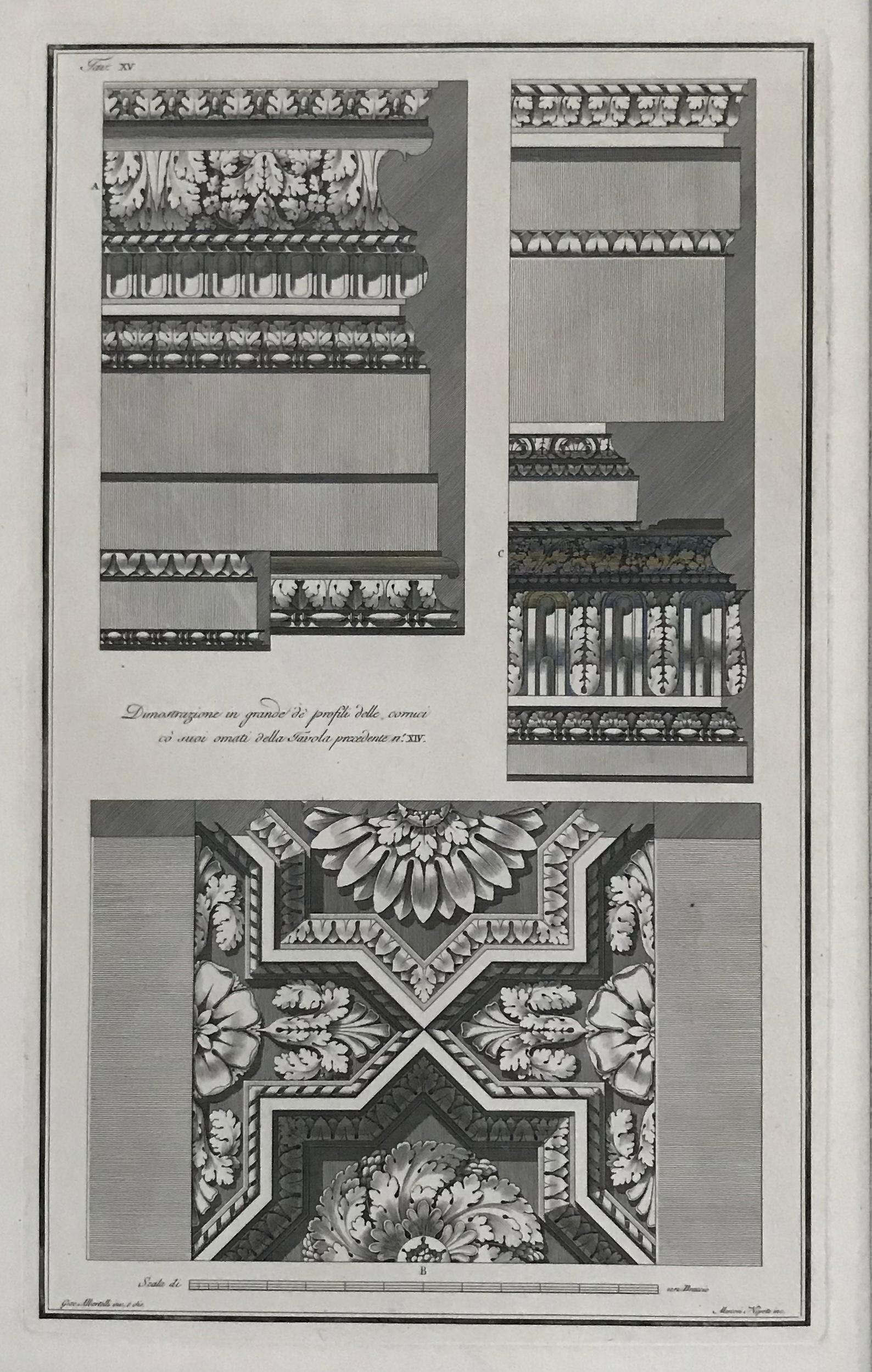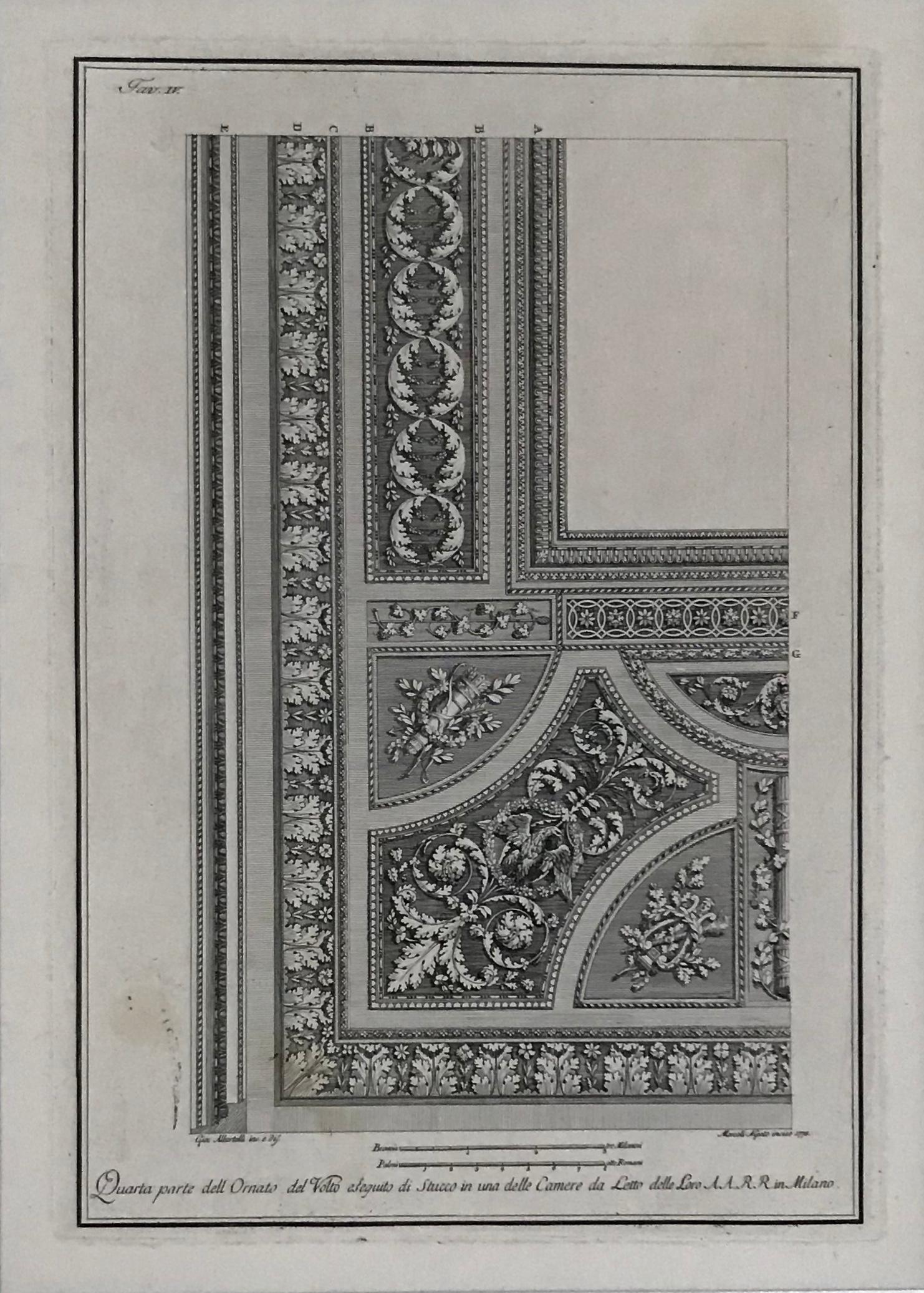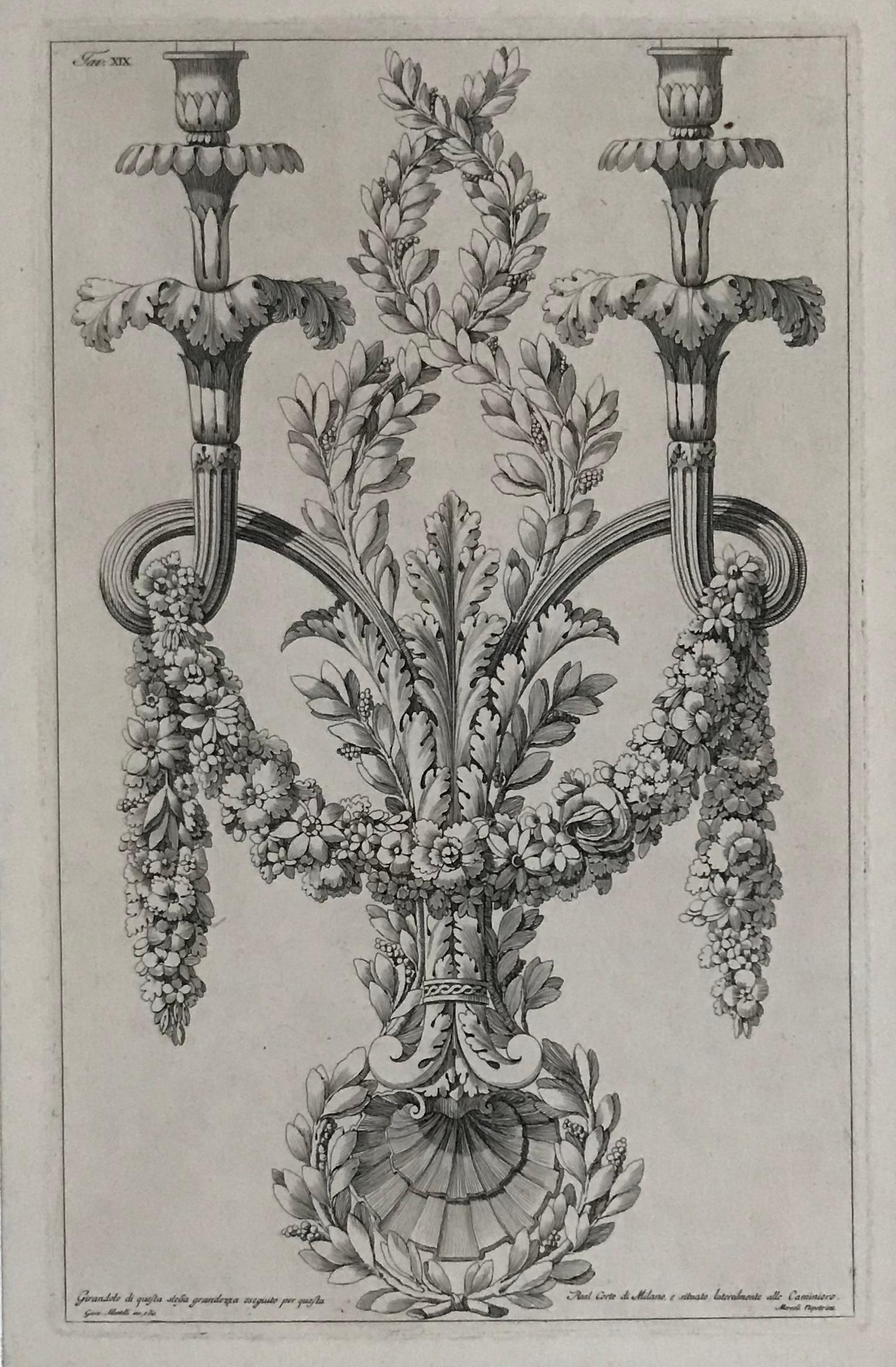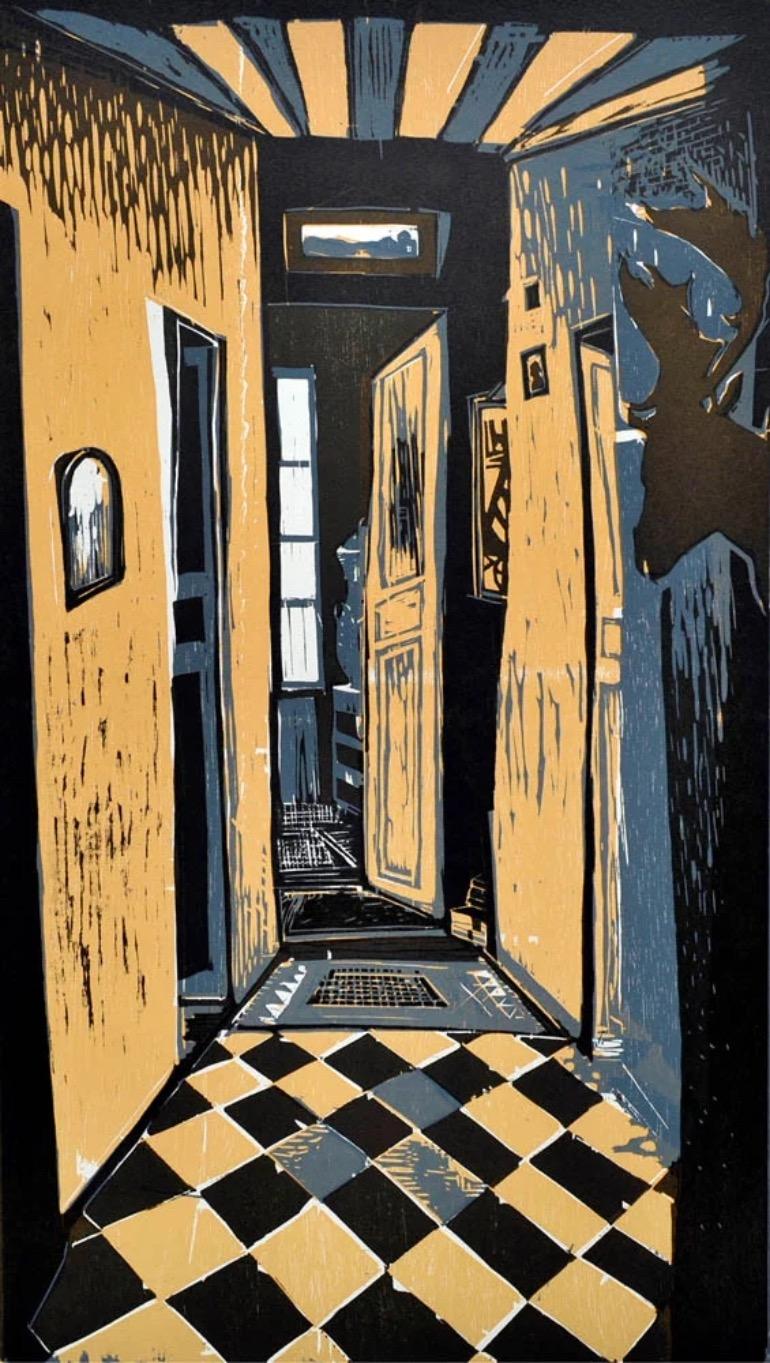Items Similar to Allegory of the four seasons. Four engravings on two framed sheets.
Want more images or videos?
Request additional images or videos from the seller
1 of 9
Albertolli GiacondoAllegory of the four seasons. Four engravings on two framed sheets.1782
1782
About the Item
Allegory of the four seasons. A pair of engravings.
These engravings are framed in white gold covered french frames.
From the publication published in Milan in 1782.
"Different ornaments, invented, designed and executed by Giocondo Albertolli " (1742-1839) Swiss-Italian architect and decorator. Giocondo Albertolli became famous for the ornamental decorations he executed in the interiors of public and private buildings in Lombardy. It represented the neoclassical style born around 1770, which due to its reaction to the baroque and the rococo was inspired by the rather austere and linear forms of the ancient Greeks and Romans. Later he was a highly regarded teacher at the Academy of Fine Arts, in Milan (better known in the abbreviated form Brera), of which he was a co-founder.
- Creator:Albertolli Giacondo (1742 - 1839, Italian)
- Creation Year:1782
- Dimensions:Height: 15.75 in (40 cm)Width: 11.82 in (30 cm)
- Medium:
- Period:1780-1789
- Condition:
- Gallery Location:Paris, FR
- Reference Number:1stDibs: LU129225385811
About the Seller
5.0
Vetted Seller
These experienced sellers undergo a comprehensive evaluation by our team of in-house experts.
Established in 2015
1stDibs seller since 2019
31 sales on 1stDibs
Typical response time: Several days
- ShippingRetrieving quote...Ships From: Paris, France
- Return PolicyA return for this item may be initiated within 14 days of delivery.
More From This SellerView All
- Architectural designs. A set of nine architectural engravings.By Albertolli GiacondoLocated in Paris, FRArchitectural designs. A set of nine architectural engravings. These engravings are framed in white gold covered french frames. From the publication published in Milan in 1782. "Diff...Category
1780s Interior Prints
MaterialsEngraving
- Ceiling designs. A set of three architectural engravings.By Albertolli GiacondoLocated in Paris, FRCeiling designs. A set of three architectural engravings. These engravings are framed in white gold covered french frames. From the publication publishe...Category
1780s Interior Prints
MaterialsEngraving
- Chandelier designs. A pair of engravingsBy Albertolli GiacondoLocated in Paris, FRChandelier designs. A pair of architectural engravings. These engravings are framed in white gold covered french frames. From the publication published in Milan in 1782. "Different o...Category
1780s Interior Prints
MaterialsEngraving
- Rhodotorulic Acid. Woodcut in colors. Signed.By Damien HirstLocated in Paris, FRHIRST Damien (1965 - ) Rhodotorulic Acid. Woodcut in colors. Signed. Provenance : DTR Modern Gallery, New York. About Damien Hirst (Artist) British artist Damien Hirst is widely considered the enfant terrible of contemporary art. He is the most prominent of the so-called Young British Artists, or YBAs, a group, largely composed of Hirst’s classmates at Goldsmiths, in London, that began exhibiting together in warehouses and factories after 1988 and is known for the use of unconventional materials and “shock tactics.” In the 1990s, Hirst said, “I can’t wait to get into a position to make really bad art and get away with it.” And indeed, he is notorious for piquing critics and baffling the public with such pieces as his signature glass vitrines containing dead sheep or sharks in formaldehyde, and his diamond-encrusted skull, For the Love of God. Working primarily in sculpture, Hirst takes after French modernist master Marcel Duchamp in his use of ready-made objects and materials, which he combines to ironic effect. He often creates in series, as with The Cure (Violet) and The Cure (Turquoise), both from 2014, which are among several pill paintings...Category
2010s Abstract Abstract Prints
MaterialsPaper
- 'Tree of life'. Coloured lithograph. Signed, titled, dated and numbered EA 1/5By Guillaume Cornelis van Beverloo (Corneille)Located in Paris, FR'Tree of life''. Coloured lithograph. Signed, titled, dated and numbered EA 1/5 This piece is accompanied with a certificate of authencity by the Corneille Foundation. Corneille – G...Category
1990s Other Art Style Figurative Prints
MaterialsLithograph
- VEITH E. Young girl with rose tree. Oil on cardboard. Signed and situated 'Wien'By Eduard VeithLocated in Paris, FRYoung girl with rose tree. Oil on cardboard. Signed and situated 'Wien' Eduard Veith, son of the room painter Julius Veith (1820-1887) and his w...Category
Early 20th Century Symbolist Paintings
MaterialsOil
You May Also Like
- Intérieur bois ILocated in PARIS, FRIt is certainly the most appropriate translation of Pascale Hémery’s work, which takes a look at the places visited on a daily basis and during her travels abroad. This look is the s...Category
21st Century and Contemporary Contemporary Interior Prints
MaterialsEngraving
- Antique French Copper Engraving - CathedralLocated in Houston, TXBold antique copper engraving of the floor plan of a French cathedral from Recueil d'Architecture, 1780. Original artwork on paper displayed on a whi...Category
1780s Interior Prints
MaterialsEngraving, Ink, Paper
- Reliefs at Temple JupiterLocated in Houston, TXEngraving titled "Coupe Et Bas Reliefs Du Temple De Jupiter", circa 1790. Original artwork on paper displayed on a white mat with a gold border. Mat fits a standard-siz...Category
1960s Interior Prints
MaterialsEngraving
- "Inspection Tour in the Wine Vaults", 1876 Philadelphia Centennial ExpositionLocated in Alamo, CAThis engraving is entitled "Philadelphia, PA- The Centennial Exposition - the Jury of Award on an Inspection Tour in the Wine Vaults of Agricultural Hall", ...Category
Late 19th Century Naturalistic Interior Prints
MaterialsEngraving
- The Heidelberg Tun: A Framed 17th Century Engraving of a Huge Wine CaskLocated in Alamo, CA"The Heidelberg Tun" is a 17th century engraving by an unknown artist. It depicts a famous huge ornamental wine cask that resided in the wine cellar of Heidelberg Castle. The cask shown here, built in 1664, is the second of four Heidelberg Tuns; the first was destroyed during the Thirty Years' War, between 1618 and 1648. This cask was built in 1664 when Karl Ludwig ordered Heidelberg cellar master...Category
Late 17th Century Old Masters Interior Prints
MaterialsEngraving
- Set of Two 18th Century Engravings from William Hogarth's "Analysis of Beauty"By William HogarthLocated in Alamo, CAThe two plates in this set were created utilizing both engraving and etching techniques by William Hogarth in 1753, originally as illustrations of his book on aesthetics, entitled "Analysis of Beauty". Due to their popularity, these plates were later published separately. The publication line in the lower right reads: "Designed, Engraved, and Publish'd by Wm. Hogarth, March 5th 1753, according to Act of Parliament." Hogarth's original copper plates were refurbished where needed by James Heath and engravings were republished in London in 1822 by Braddock, Cradock & Joy. This was the last time Hogarth's copper plates were used for printing. Most were melted during World War I for the construction of bombs. These large folio sized "Analysis of Beauty" engravings are presented in antiqued gold-colored frames with double mats; the outer silk mats are light brown-colored and the inner mats are dark brown. Each frame measures 27.38" x 31.25" x 1.13". There is one tiny spot in the right margin of plate 1 and another in the lower margin; the latter could be from the printing process. The prints are otherwise in excellent condition. The "Analysis of Beauty" series is in the collection of many major museums, including: The British Museum, The Metropolitan Museum of Art, The Tate Museum, The Chicago Art Institute and The Fine Arts Museums of San Francisco. The first engraving (Plate 1) depicts a courtyard of statues which is filled with some of the most famous works of classical sculpture. The most important sculptures are surrounded by less impressive works. The Medicean Venus (#13) is in the center with a statue of Julius Caesar (#19) to the right, elevated on a pulley with a short, overdressed Brutus stands over the falling Caesar. The Apollo Belvedere (#12) is next. A judge stands to the right with his foot on a cherub (#16). Another crying cherub holds a gallows and wipes his tears with the judge's robe. A sphinx (#21) and the drunken Silenus (#107) are below the Venus. Michaelangelo's torso (#54) and a statue of Antonius (#6) are seen in the foreground. The Farnese Hercules (#3) and a bust of another Hercules (#4) under two statuettes of Isis are also included in the scene. The key to these objects is included in the form of a serpentine line winding around a cone (#26), Hogarth's "Line of Beauty". For Hogarth the winding line is an essential element of beauty in art. Hogarth's theory of beauty is communicated in this plate. Plate 2 is thought to represent the Wanstead Assembly, with the Earl of Tynley and his household. It is an adaptation of a scene in the Happy Marriage series, which complements Hogarth's Marriage à la Mode...Category
Mid-18th Century Old Masters Interior Prints
MaterialsEtching, Engraving
Recently Viewed
View AllMore Ways To Browse
Four Antique
Four Framed
Antique Interior Decorations
Antique French Interior Design
Greek And Roman
Antique White Interior
Baroque Interior
Four Engravings
Roman Engravings
Antique French Sheets
Neoclassical Engraving
Pair Engravings
Pair Of Engravings
Pair Of French Prints
Framed Art Neoclassical
French Allegory
Engraving Greek
Engravings Greece



